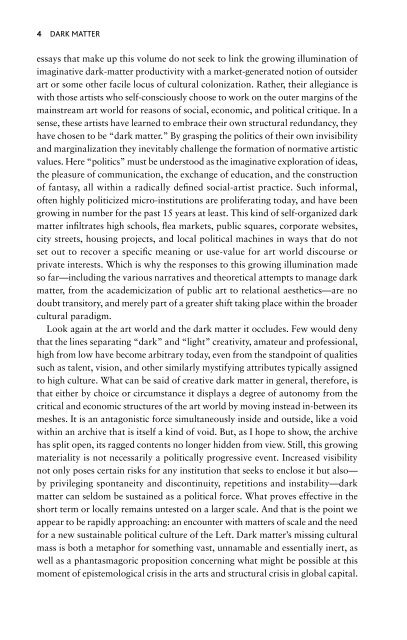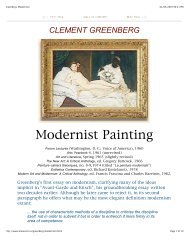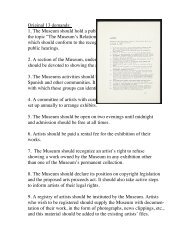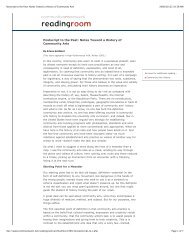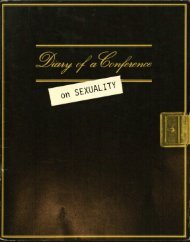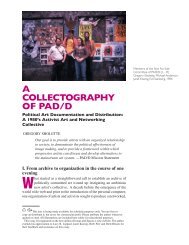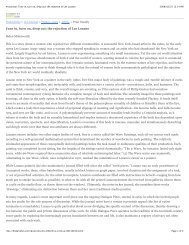Dark Matter Archives
Dark Matter Archives
Dark Matter Archives
You also want an ePaper? Increase the reach of your titles
YUMPU automatically turns print PDFs into web optimized ePapers that Google loves.
4 <strong>Dark</strong> matteressays that make up this volume do not seek to link the growing illumination ofimaginative dark-matter productivity with a market-generated notion of outsiderart or some other facile locus of cultural colonization. Rather, their allegiance iswith those artists who self-consciously choose to work on the outer margins of themainstream art world for reasons of social, economic, and political critique. In asense, these artists have learned to embrace their own structural redundancy, theyhave chosen to be “dark matter.” By grasping the politics of their own invisibilityand marginalization they inevitably challenge the formation of normative artisticvalues. Here “politics” must be understood as the imaginative exploration of ideas,the pleasure of communication, the exchange of education, and the constructionof fantasy, all within a radically defined social-artist practice. Such informal,often highly politicized micro-institutions are proliferating today, and have beengrowing in number for the past 15 years at least. This kind of self-organized darkmatter infiltrates high schools, flea markets, public squares, corporate websites,city streets, housing projects, and local political machines in ways that do notset out to recover a specific meaning or use-value for art world discourse orprivate interests. Which is why the responses to this growing illumination madeso far—including the various narratives and theoretical attempts to manage darkmatter, from the academicization of public art to relational aesthetics—are nodoubt transitory, and merely part of a greater shift taking place within the broadercultural paradigm.Look again at the art world and the dark matter it occludes. Few would denythat the lines separating “dark” and “light” creativity, amateur and professional,high from low have become arbitrary today, even from the standpoint of qualitiessuch as talent, vision, and other similarly mystifying attributes typically assignedto high culture. What can be said of creative dark matter in general, therefore, isthat either by choice or circumstance it displays a degree of autonomy from thecritical and economic structures of the art world by moving instead in-between itsmeshes. It is an antagonistic force simultaneously inside and outside, like a voidwithin an archive that is itself a kind of void. But, as I hope to show, the archivehas split open, its ragged contents no longer hidden from view. Still, this growingmateriality is not necessarily a politically progressive event. Increased visibilitynot only poses certain risks for any institution that seeks to enclose it but also—by privileging spontaneity and discontinuity, repetitions and instability—darkmatter can seldom be sustained as a political force. What proves effective in theshort term or locally remains untested on a larger scale. And that is the point weappear to be rapidly approaching: an encounter with matters of scale and the needfor a new sustainable political culture of the Left. <strong>Dark</strong> matter’s missing culturalmass is both a metaphor for something vast, unnamable and essentially inert, aswell as a phantasmagoric proposition concerning what might be possible at thismoment of epistemological crisis in the arts and structural crisis in global capital.


